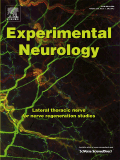
Translational Neurodegeneration
metrics 2024
Advancing the Frontiers of Neurodegenerative Research
Introduction
Translational Neurodegeneration, an esteemed journal in the field of neuroscience, is published by BMC and has been an open access platform since 2012, delivering high-quality research from its base in the United Kingdom. With an impressive impact factor reflecting its significant contributions, this journal focuses on critical advancements in cellular and molecular neuroscience, cognitive neuroscience, and clinical neurology, boasting a Q1 ranking across all these categories as of 2023. Researchers and professionals benefit from its extensive reach, characterized by exceptional Scopus rankings that place it in the top percentile of its field. The journal serves as a vital resource for academics and healthcare practitioners alike, aiming to bridge the gap between laboratory discoveries and clinical applications, thereby enhancing understanding and treatment of neurodegenerative diseases. With its commitment to open access, Translational Neurodegeneration ensures that its published research is accessible to a global audience, promoting collaboration and knowledge exchange within the scientific community.
Metrics 2024
 3.37
3.37 10.80
10.80 11.60
11.60 62
62Metrics History
Rank 2024
Scopus
IF (Web Of Science)
JCI (Web Of Science)
Quartile History
Similar Journals

Brain Communications
Illuminating the Complexities of the Human BrainBrain Communications is an esteemed, open-access academic journal published by Oxford University Press since 2019, focusing on the dynamic field of neuroscience. With a dedicated ISSN and an E-ISSN of 2632-1297, this journal aims to address the intricate relationships between brain functions, psychiatric disorders, and neurobiological mechanisms. The journal stands out in the academic realm, holding a prestigious Q1 ranking across several categories, including Biological Psychiatry, Cellular and Molecular Neuroscience, Neurology, and Psychiatry and Mental Health for 2023. Notably, it has also secured impressive Scopus ranks in various neuroscience and psychiatry fields, evidencing its commitment to high-quality research. With an impact factor reflective of its growing influence, Brain Communications provides accessible research findings to professionals, researchers, and students alike, fostering a deeper understanding of complex neurological phenomena. This innovative journal is pivotal for anyone involved in advancing knowledge in neuroscience and mental health.

NEUROMOLECULAR MEDICINE
Advancing the Frontiers of Neuroscience and Molecular MedicineNEUROMOLECULAR MEDICINE, published by HUMANA PRESS INC, is a prestigious peer-reviewed journal dedicated to advancing the fields of cellular and molecular neuroscience, molecular medicine, and neurology. With an ISSN of 1535-1084 and an E-ISSN of 1559-1174, the journal boasts a significant presence in academic research since its inception in 2002 and continues to publish cutting-edge studies through 2024. Ranked in the Q2 category for 2023 in various disciplines, including Neuroscience and Molecular Medicine, it holds impressive positions in Scopus rankings, including 41st out of 192 in Neuroscience and Neurology. Although not an open access journal, NEUROMOLECULAR MEDICINE remains invaluable for researchers, professionals, and students seeking to explore the intricate relationships between molecular mechanisms and neurological functions, thereby contributing to the scientific understanding of nervous system diseases and therapeutic innovations.

Alzheimers Research & Therapy
Connecting researchers to transform Alzheimer's understanding.Alzheimer's Research & Therapy is a leading peer-reviewed journal published by BMC, dedicated to advancing our understanding of Alzheimer's disease and other neurodegenerative disorders. As an Open Access journal since 2009, it ensures that vital research findings are freely accessible to the global community, facilitating collaboration and innovation in the field. The journal's commitment to quality is evident in its impressive impact factor and its prestigious ranking in the Q1 quartile across multiple categories including Cognitive Neuroscience and Neurology. With a Scopus rank placing it in the top tier of both Neuroscience and Neurology disciplines, Alzheimer's Research & Therapy serves as a crucial platform for researchers, clinicians, and students who seek to contribute to the fight against Alzheimer's and related disorders. The journal covers a wide range of topics and actively encourages submissions that explore therapeutic strategies and innovative research methodologies, enriching the scientific dialogue in this vital area of health.

FOLIA NEUROPATHOLOGICA
Connecting researchers to vital neuropathological findings.FOLIA NEUROPATHOLOGICA is a distinguished Open Access journal specializing in the fields of Neurology and Pathology, published by the reputable TERMEDIA PUBLISHING HOUSE LTD. With an ISSN of 1641-4640 and E-ISSN 1509-572X, this journal has been a vital resource for the dissemination of high-quality research since its inception in 1994. Covering a broad spectrum of topics within neuropathology, the journal emphasizes clinical findings and forensic implications, making it an essential platform for healthcare professionals, researchers, and students alike. With impressive impact factors positioning it in the Q3 category for both Neurology (clinical) and Pathology and Forensic Medicine, FOLIA NEUROPATHOLOGICA occupies a significant place among its peers, ranked within the 36th to 46th percentiles on Scopus. Scholars can benefit from the Open Access model implemented since 2005, ensuring wide accessibility and distribution of critical research outputs aimed at advancing both clinical practices and academic knowledge. Based in Poland, at KLEEBERGA 2, POZNAN 61-615, this journal continues to shape the discourse in neuropathology and related fields.

NEUROSCIENCE RESEARCH
Connecting Science and Application in NeuroscienceNEUROSCIENCE RESEARCH, published by Elsevier Ireland Ltd, is a leading journal in the field of neuroscience, with a notable reputation for disseminating high-quality research that spans a variety of topics within the discipline. With an ISSN of 0168-0102 and an E-ISSN of 1872-8111, this journal serves as a vital platform for both established researchers and emerging voices in the field. Ranking in the Q2 quartile in both Medicine and Neuroscience categories, it has been recognized as a reliable source of innovative findings since its inception in 1984, with continuous publication through 2024. Although it does not currently offer Open Access options, the journal is indexed in Scopus, holding a significant position at Rank #48/113 in General Neuroscience, reflecting its contribution to advancing the understanding of neural mechanisms across various contexts. With its address anchored in Ireland, NEUROSCIENCE RESEARCH plays an essential role in bridging scientific inquiry and practical applications, making it an indispensable resource for researchers, professionals, and students dedicated to the burgeoning field of neuroscience.

Frontiers in Neurology
Pioneering Insights in Neurology and NeuroscienceFrontiers in Neurology is a premier open-access journal dedicated to the advancement of research in the field of neurology, published by FRONTIERS MEDIA SA since 2010. With the ISSN 1664-2295 and an international reach established from its base in Lausanne, Switzerland, this journal has rapidly become a vital resource for neurologists and neuroscientists alike, presenting high-quality research that addresses critical developments in clinical and experimental neurology. Holding a solid Q2 quartile ranking in both neurology and clinical neurology, Frontiers in Neurology demonstrates substantial influence, evidenced by its respectable Scopus rankings—151st in clinical neurology and 77th in neuroscience neurology. The journal employs robust peer review practices to ensure rigor and integrity, while its open-access model fosters widespread dissemination of knowledge. By facilitating interdisciplinary dialogue and empowering research efforts, this journal not only supports the academic community but also contributes to the advancement of treatment and understanding of neurological disorders.

npj Aging and Mechanisms of Disease
Connecting Research to Transform Aging Sciencenpj Aging and Mechanisms of Disease is a leading open-access journal dedicated to advancing the understanding of the biological mechanisms underlying aging and age-related diseases. Published by NATURE PORTFOLIO in the United Kingdom, this journal has established itself as a vital resource within the fields of Aging and Geriatrics and Gerontology, proudly holding a prestigious Q1 ranking in both categories as of 2023. With an impressive Scopus ranking, placing it in the top 10 for Geriatrics and Gerontology, and the top 9 for Aging, the journal is committed to disseminating high-quality, peer-reviewed research that offers innovative insights and fosters collaboration among researchers and practitioners. Since its inception in 2015, npj Aging and Mechanisms of Disease has embraced the open-access model, ensuring that groundbreaking findings are freely available to all, thereby promoting widespread knowledge-sharing within the scientific community. This journal serves as an essential platform for those seeking to explore the complex interplay of genetic, molecular, and environmental factors that influence aging and its associated challenges.

NATURE NEUROSCIENCE
Pioneering New Paths in Understanding the BrainNATURE NEUROSCIENCE is a premier journal published by NATURE PORTFOLIO, focusing on cutting-edge research in the field of neuroscience. With an esteemed impact factor that reflects its significance in the academic community, this journal occupies an exceptional place in the 2023 Q1 category for neuroscience (miscellaneous) and boasts a leading Scopus rank of #1 out of 113 in general neuroscience, placing it within the top 1st percentile. Since its inception in 1998, NATURE NEUROSCIENCE has consistently delivered high-quality, peer-reviewed articles that contribute to our understanding of the nervous system, driving innovation and scholarship across disciplines. Although it does not offer open access, the journal remains a vital resource for researchers, professionals, and students seeking to stay at the forefront of neuroscientific discovery and discussion. Its editorial commitment to excellence ensures that it continually shapes the trajectory of neuroscience research well into 2024 and beyond, making it an indispensable asset for anyone passionate about the brain and its complexities.

NEUROSCIENCE
Advancing the frontiers of neural discovery.NEUROSCIENCE, published by PERGAMON-ELSEVIER SCIENCE LTD, has established itself as a reputable journal in the field of neuroscience since its inception in 1976, continuing its contributions through 2024. With a Category Quartile ranking of Q2 in Neuroscience (miscellaneous) and a Scopus Rank of #41 out of 113, this journal represents a critical platform for the dissemination of innovative research and insights. Although it currently does not offer open access options, NEUROSCIENCE aims to advance our understanding of the nervous system by publishing high-quality original research, reviews, and methodological articles, thereby engaging a comprehensive audience of researchers, professionals, and students alike. With an impact factor that reflects its significance in the scientific community, this journal remains a go-to source for cutting-edge discoveries and scholarly discussions in the dynamic field of neuroscience.

EXPERIMENTAL NEUROLOGY
Advancing the Frontiers of Neurological Research.EXPERIMENTAL NEUROLOGY is a premier academic journal published by Academic Press Inc, Elsevier Science, focusing on advancements in the fields of Developmental Neuroscience and Neurology. With an impressive Impact Factor and ranked in the Q1 quartile of both categories—positioning it among the top-tier journals—this publication has established itself as a vital resource for researchers, clinicians, and students alike. Since its inception in 1959, it has fostered the dissemination of cutting-edge research and innovative approaches to understanding neurological function and related disorders. While EXPERIMENTAL NEUROLOGY currently operates under a subscription access model, its rich archives and ongoing contributions to the field continue to inspire and inform the next generation of neurobiologists. The journal also boasts a high ranking in Scopus, placing fourth in Developmental Neuroscience and twentieth in Neurology, indicating its robust influence and scholarly significance. For those committed to advancing knowledge in these critical areas, EXPERIMENTAL NEUROLOGY is an indispensable platform for inquiry and discovery.